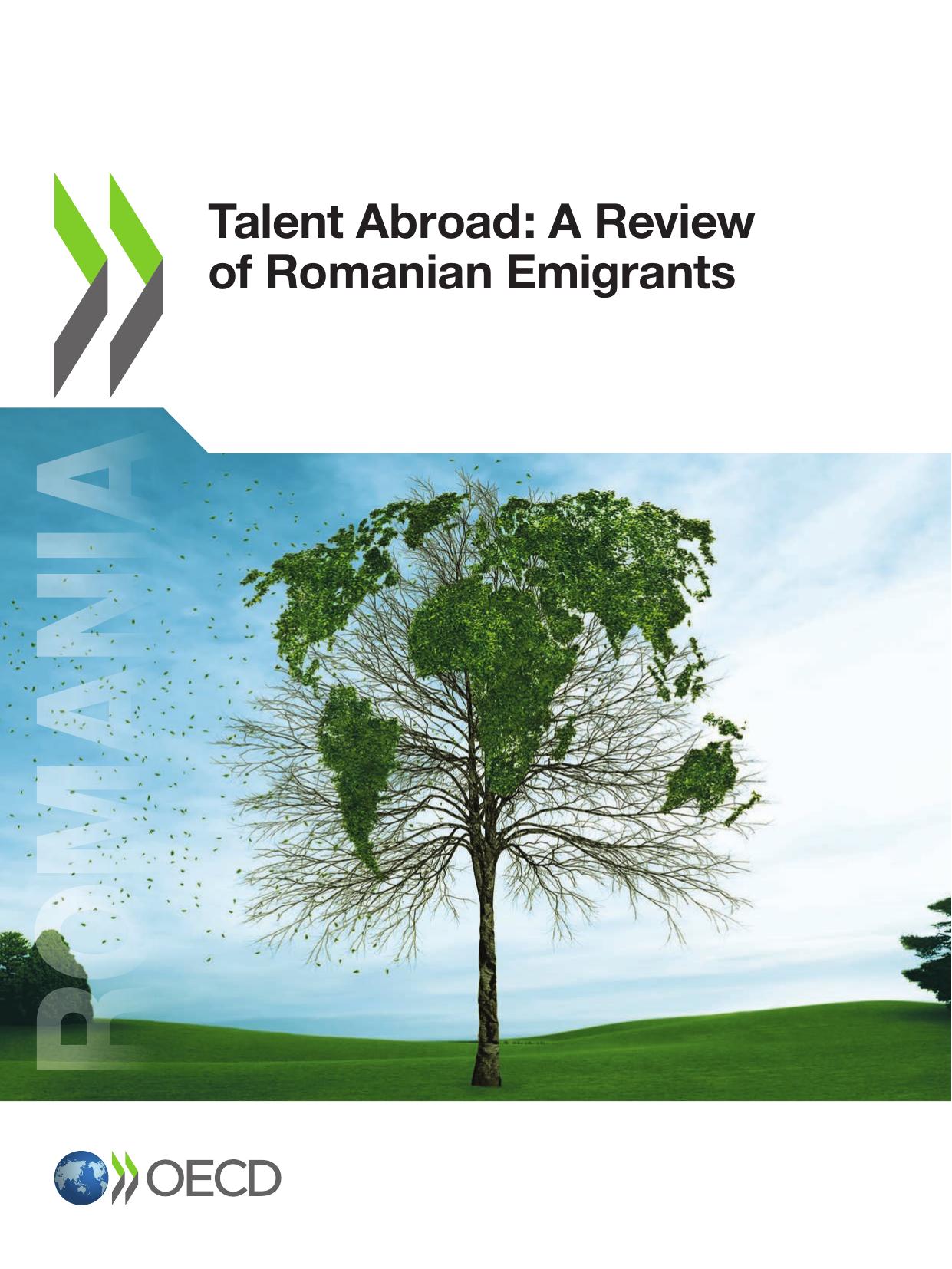Talent Abroad: A Review of Romanian Emigrants by OECD

Author:OECD
Language: eng
Format: epub, pdf
Tags: socialissues/employment
Publisher: OECD Publishing
Published: 2019-07-16T00:00:00+00:00
Net migration patterns differ by country, with negative net migration to Spain
For a number of OECD countries, data are available on both the arrivals and the departures of Romanian citizens. In these cases – which include some of the main destination countries – it is possible to determine net migration flows of Romanian citizens by subtracting the arrivals from the departures. Net flows of Romanians are positive whenever more Romanian citizens emigrate to a particular OECD country than leave there; in the reverse case, net flows are negative.
After relatively high net migration flows from Romania to Spain between 2002 and 2007, the direction of the net flow reversed starting in 2008 (see Figure 2.5). Between 2002 and 2007, inflows of Romanians increased while outflows remained small both in absolute terms and compared to the magnitude of inflows. In 2007, for example, there were almost 200 000 arrivals against only 8 100 departures, for a net inflow of almost 190 000. Inflows decreased by 70% in 2008 but outflows rose by almost 300% to 32 000, leading to a net inflow of only 28 000. Negative net migration to Spain occurred in 2010, when outflows of Romanian citizens surpassed inflows. While 2011 and 2012 saw a return to positive net migration to Spain with decreases in outflows, negative net migration returned in 2013 and has prevailed since. The largest negative net flow (-48 000) occurred in 2013, when almost 71 000 Romanian citizens left Spain against only 23 000 arrivals. Since 2009 almost 55 000 Romanians on average have left Spain per year compared to an annual average of only 19 000 arrivals. This increasingly negative net migration has led to the decline in the number of Romanian emigrants living in Spain described in Chapter 1.
Net flows of Romanian citizens to Italy followed a pattern similar to those to Spain but, thanks to lower levels of departures, did not become negative by 2015 despite a downward trend (see Figure 2.5). Net flows to Italy were generally lower than net flows to Spain between 2002 and 2006. In 2007, however, net flows to Italy rapidly surpassed net flows to Spain with fewer than 4 000 departures for a net inflow of 268 000. While net flows to Italy subsequently fell substantially below their 2007 level, the driver of this decline was decreasing inflows instead of increasing outflows as in the case of Spain: outflows of Romanian citizens from Italy only increased to about 10 000 per year between 2008 and 2015 while inflows plummeted to under 50 000 by 2015.
Unlike net flows to Spain and Italy, net flows to Germany and the United Kingdom increased after 2007 (Figure 2.5). Despite gradual increases in inflows to Germany between 2002 and 2006, net migration was low due to relatively high outflows of Romanian citizens. The spike in inflows to Germany in 2007 was accompanied by only a small increase in outflows, leading to an overall increase in net flows. Net flows to Germany followed an increasingly positive trend between 2008 and 2015.
Download
Talent Abroad: A Review of Romanian Emigrants by OECD.pdf
This site does not store any files on its server. We only index and link to content provided by other sites. Please contact the content providers to delete copyright contents if any and email us, we'll remove relevant links or contents immediately.
Bullshit Jobs by David Graeber(4136)
Radical Candor by Kim Scott(2689)
I Am Right, You Are Wrong by Edward De Bono(2427)
23:27 by H. L. Roberts(2222)
Nomadland by Jessica Bruder(2036)
Average Is Over by Tyler Cowen(1822)
The Conflict Resolution Phrase Book by Barbara Mitchell & Cornelia Gamlem(1753)
Out of Our Minds: Learning to Be Creative by Ken Robinson(1715)
High-Impact Interview Questions by Victoria A. Hoevemeyer(1671)
Who Moved My Cheese?: An Amazing Way to Deal With Change in Your Work and in Your Life by Johnson Spencer(1626)
The Ideal Team Player by Patrick M. Lencioni(1618)
An Everyone Culture: Becoming a Deliberately Developmental Organization by Robert Kegan & Lisa Laskow Lahey(1616)
The Asshole Survival Guide by Robert I. Sutton(1576)
Automatic Society by Bernard Stiegler(1531)
Unleashed by Anne Morriss & Frances Frei(1510)
Who by Street Randy & Smart Geoff(1486)
42 Rules of Employee Engagement by Susan Stamm(1449)
96 Great Interview Questions to Ask Before You Hire by Paul Falcone(1433)
Fish! by Stephen C. Lundin(1374)
